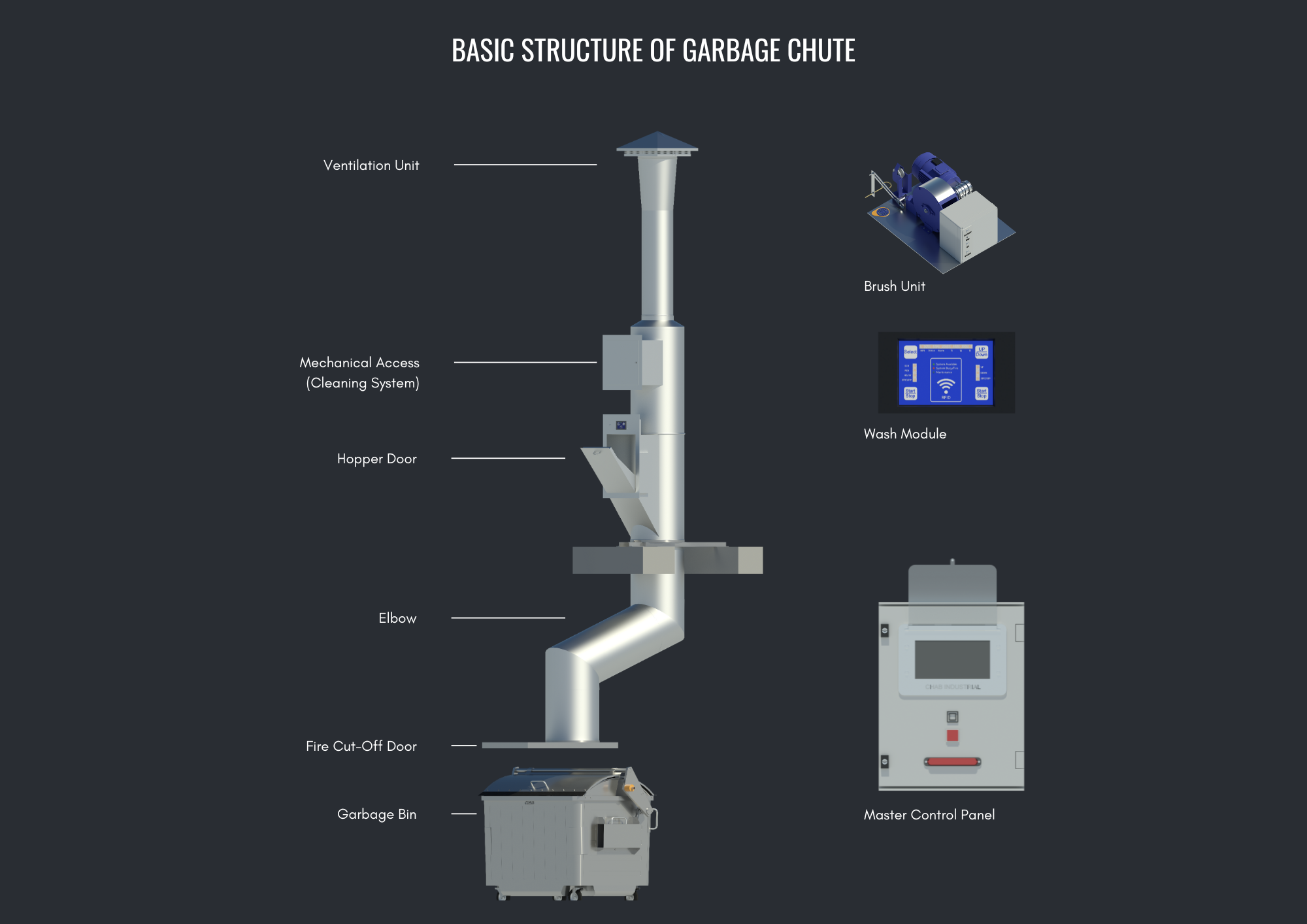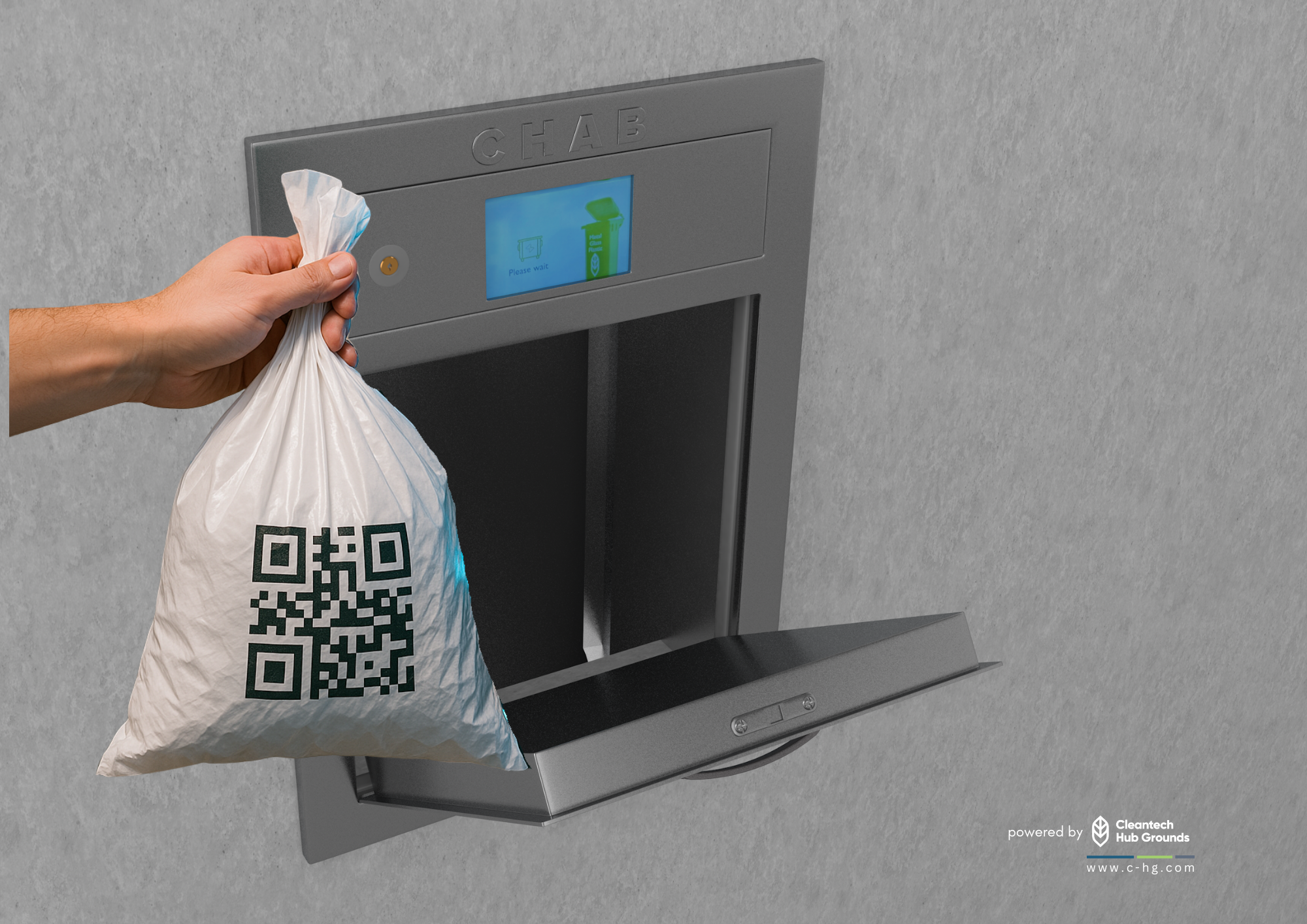In the vertical landscapes of modern cities, space is a luxury and convenience is a necessity. As urban populations continue to grow and high-rise buildings dominate the skyline, waste management becomes an increasingly complex challenge. One of the most efficient solutions to this issue is the garbage chute - a simple yet highly effective system that streamlines the disposal of everyday waste in multi-storey buildings.
What is a Garbage Chute?
A garbage chute is a vertical passage that allows residents in multi-storey buildings to dispose of household waste easily. Typically made from stainless steel or galvanized metal, chutes are designed to carry trash from upper floors to a central collection point—usually a compactor or bin located at the ground or basement level. Other collection point waste handling equipment could be an Automated Waste Collection System (AWCS) or waste sorters like CHAB’s Arbor Diverter.

How Does it Work?
Each floor of a building has an intake door—similar to a small hatch—connected to the main chute, this is typically called hopper door. Residents simply open the hopper door, deposit their trash bags, and gravity does the rest. The trash slides down the chute and lands in the designated receptacle below, which is later emptied by building management or municipal waste services.
For added safety, these hopper doors are powered by One-Door-Open (ODO) system, which literally means that when one door in any floor is open, all other doors stay closed. This way, untoward incidents when disposing items at the same time, are prevented e.g., broken glasses impact from higher floors, etc.
Some modern chutes are equipped with odour control systems, fire safety features, and automated sorting mechanisms that separate recyclables from general waste, making them eco-friendlier and more efficient.
Benefits of Garbage Chutes
Convenience: Residents no longer need to carry trash down multiple flights of stairs or wait for an elevator. Waste disposal becomes quick and effortless.
Hygiene and Sanitation: Garbage chutes help keep hallways and living spaces cleaner by reducing the risk of spills and trash accumulation in common areas.
Efficiency: Centralized waste collection saves time and labour for building maintenance staff and can help streamline overall waste management logistics.
Safety: In well-maintained systems, the risk of pests and the spread of odours is significantly minimized. Many chutes also include fire-rated doors and automatic fire-suppression systems for enhanced building safety.
Considerations and Challenges
Despite their advantages, garbage chutes are not without challenges. Improper use—such as overloading, placing large items, or failing to properly seal waste—can lead to blockages, foul smells, and even infestations. Regular cleaning and maintenance are crucial for preventing such issues.
Furthermore, as sustainability becomes a priority, garbage chute systems are being reimagined to support waste segregation, composting, and smart sensors that track disposal habits to encourage greener living.
The Future of Garbage Chutes
Incorporating smart technology into garbage chutes is on the rise. Features like touchless doors, camera systems for monitoring misuse, and integration with building management apps are turning these humble systems into high-tech conveniences.

As we look to the future of urban living, garbage chutes remain a vital component of sustainable and convenient waste management—quietly serving behind the scenes to keep our buildings clean, safe, and liveable.
